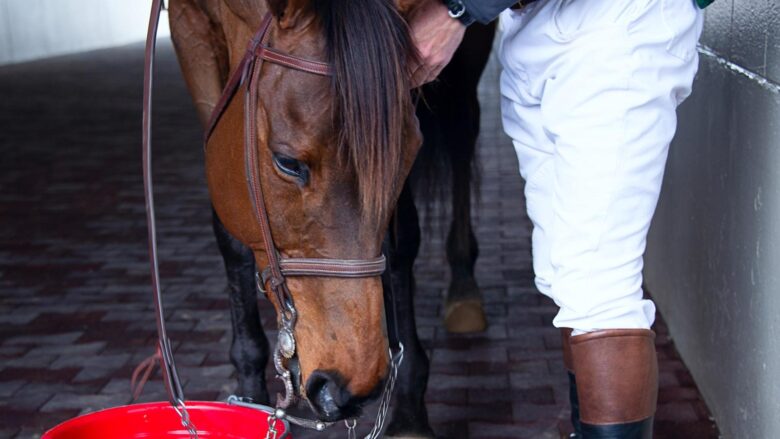Step into the mesmerizing world of equine breeds, where diversity reigns supreme. From majestic horses with flowing manes to sturdy ponies with playful personalities, the equine world is a treasure trove of different shapes, sizes, and colors. Join us on a journey as we unveil the intricate tapestry of equine breeds, each one unique in its own right. Explore the beauty of variation and learn more about the fascinating world of horses, ponies, and everything in between.
Exploring the Origins of Equine Breeds
Equine breeds have a rich history that dates back centuries, with each breed originating from different regions and serving unique purposes. From the sturdy Clydesdale to the elegant Arabian, these breeds have been carefully developed over time to exhibit distinct characteristics that make them stand out in the equine world.
One of the oldest and most revered equine breeds is the Arabian horse, known for its speed, endurance, and refinement. Originating from the Arabian Peninsula, these horses played a crucial role in the development of many other breeds, influencing traits such as intelligence, spirit, and overall athleticism. The Arabian’s distinctive features, such as its dished face and high tail carriage, set it apart from other breeds and make it easily recognizable.
On the other end of the spectrum, we have draft breeds like the Shire and Percheron, which were bred for strength and size to serve as working horses in fields and forests. These majestic giants are a testament to human ingenuity and selective breeding, as they have been carefully developed to excel in pulling heavy loads and performing farm work with ease. Despite their large size, these breeds are known for their gentle temperament and willingness to work with humans.
Understanding the Characteristics of Different Horse Breeds
Exploring the world of different horse breeds is a fascinating journey that reveals the vast diversity within the equine community. Each breed has its own unique characteristics that make them distinct and special. From the elegant Arabian with its dished face and high tail carriage to the sturdy and dependable Clydesdale known for its large size and feathered feet, there is a breed for every type of horse enthusiast.
One of the key factors that differentiate horse breeds is their size and build. Some breeds, such as the massive Shire horse, can reach heights of over 17 hands and weigh over a ton, while others, like the petite Icelandic horse, rarely exceed 14 hands. Additionally, breeds like the sleek Thoroughbred are known for their speed and agility, making them popular choices for racing, while the strong and powerful Percheron is often used for pulling heavy loads.
Another important aspect to consider when exploring horse breeds is their temperament and behavior. Certain breeds, such as the gentle and docile Quarter Horse, are well-suited for beginners or those looking for a calm riding experience. On the other hand, breeds like the spirited and energetic Andalusian may require a more experienced rider to handle their high energy levels and intelligence. Understanding these characteristics can help horse owners choose the perfect breed that matches their own experience level and riding preferences.
The Importance of Preserving Rare Equine Breeds
Preserving rare equine breeds is essential for maintaining the biodiversity of horses around the world. These unique breeds have a long history and are often deeply rooted in the cultural heritage of certain regions. By conserving these rare equine breeds, we are not only protecting their genetic diversity but also ensuring that future generations can appreciate and learn from their unique characteristics and traits.
Each rare equine breed has its own set of desirable qualities that make it stand out from more common breeds. For example, the Marwari horse from India is known for its distinctive inward-turning ear tips, while the Caspian horse from Iran is prized for its small stature and agile nature. These rare breeds offer valuable genetic diversity that can be important for breeding programs aimed at improving overall equine health and performance.
Without efforts to preserve rare equine breeds, we run the risk of losing these unique animals forever. In a world where only a handful of horse breeds dominate the equestrian industry, the preservation of rare equine breeds is crucial for maintaining a diverse and vibrant equine community. By supporting initiatives that protect and promote these rare breeds, we can ensure that they continue to enrich our lives and contribute to the rich tapestry of equine history.
Tips for Choosing the Right Horse Breed for Your Needs
When it comes to choosing the right horse breed for your specific needs, it can be overwhelming to navigate the diverse world of equine breeds. Here are some tips to help you make an informed decision:
Consider Your Riding Style: Think about what activities you will be doing with your horse. Different breeds are bred for specific purposes, such as jumping, dressage, trail riding, or western pleasure. Make sure the breed you choose aligns with your riding goals.
Think About Size and Temperament: Consider the size of the horse and its temperament. Some breeds are known for being more spirited and high-energy, while others are more calm and gentle. It’s important to choose a horse that matches your level of experience and comfort.
Concluding Remarks
As we conclude our exploration into the vast array of equine breeds, we have truly witnessed the beauty and diversity that encompasses the world of horses. From the graceful Arabians to the sturdy Clydesdales, each breed brings its own unique characteristics and history to the table. Whether you are a seasoned equestrian or simply an admirer of these majestic creatures, we hope this article has sparked a newfound appreciation for the incredible diversity found within the equine world. So next time you see a horse trotting across a field, take a moment to marvel at the rich tapestry of breeds that make up the equine community. Thank you for joining us on this journey of discovery, and may your love for horses continue to grow and flourish.



